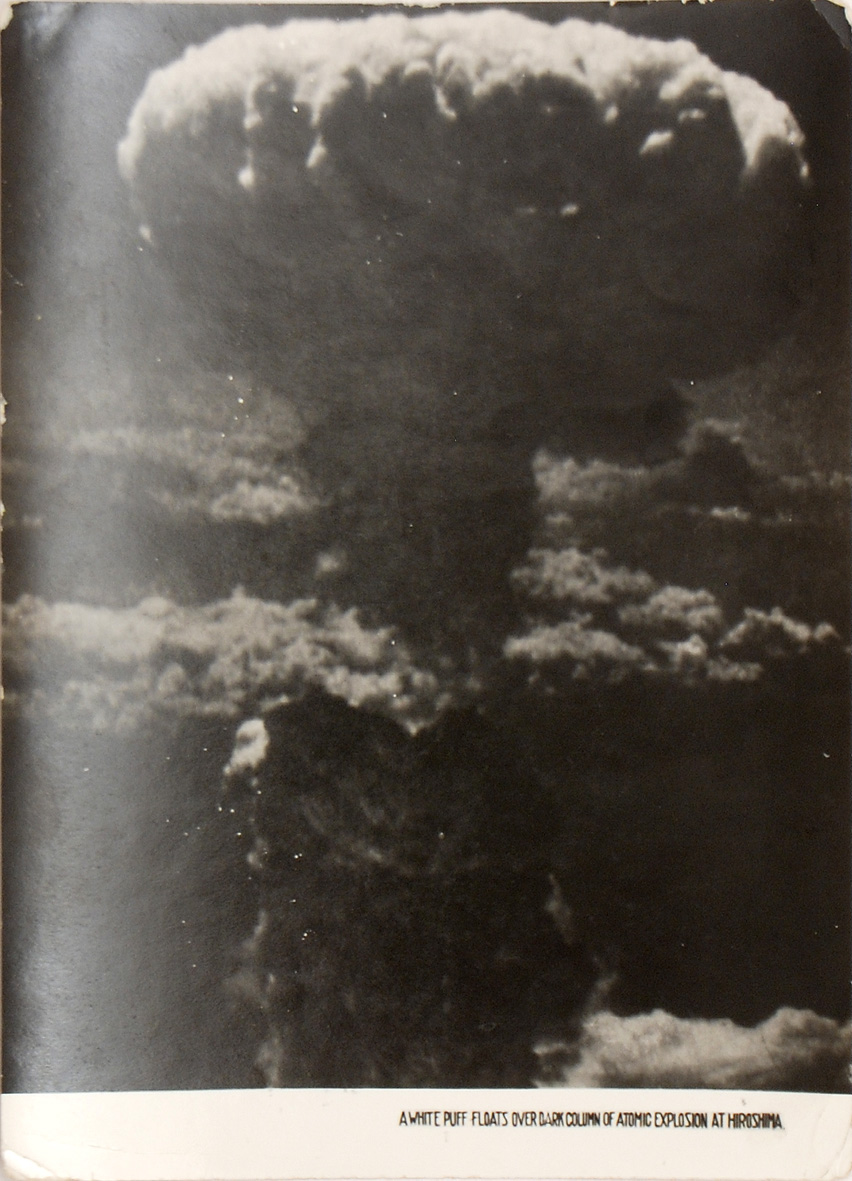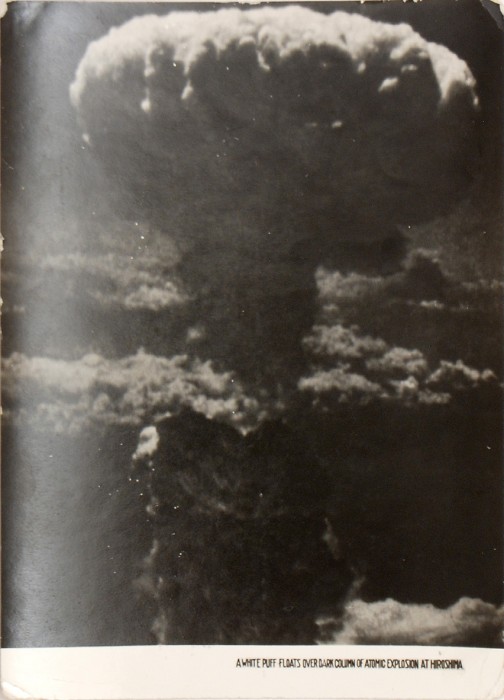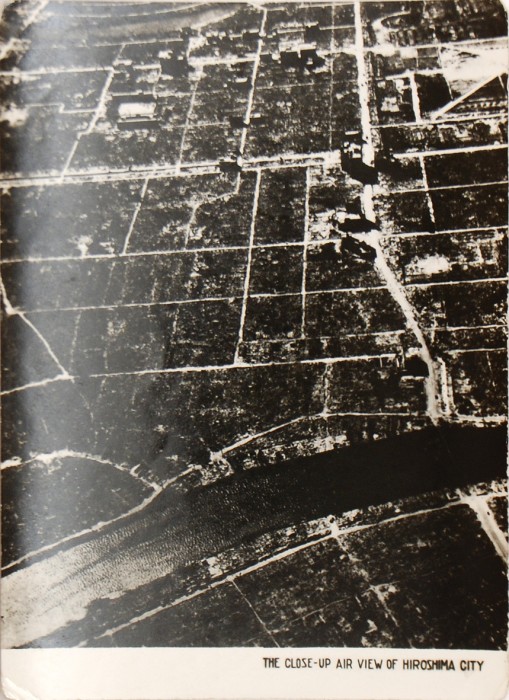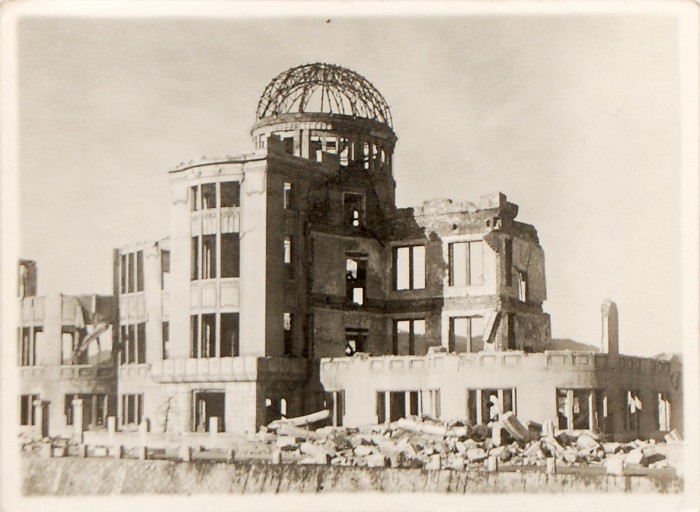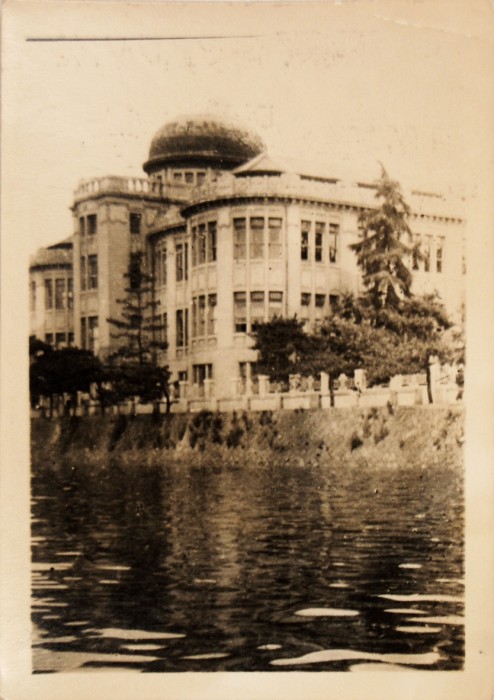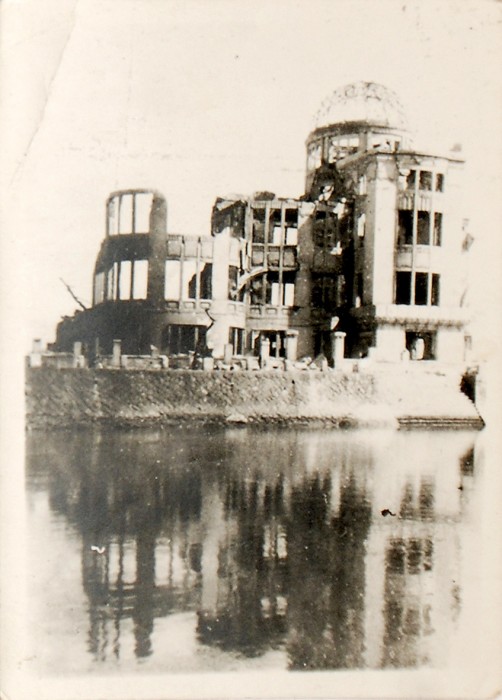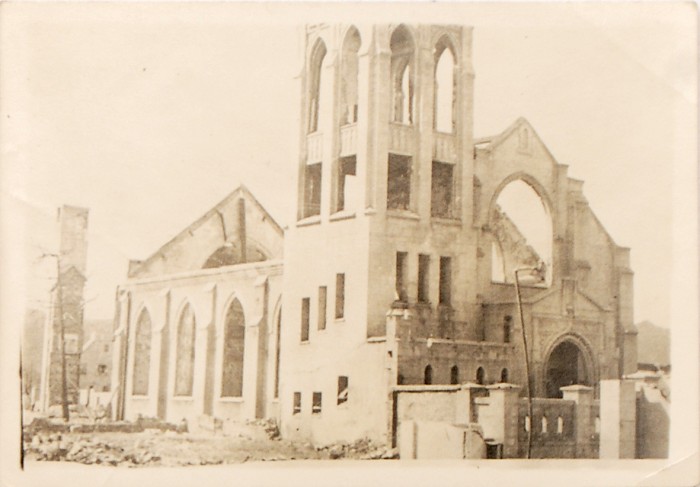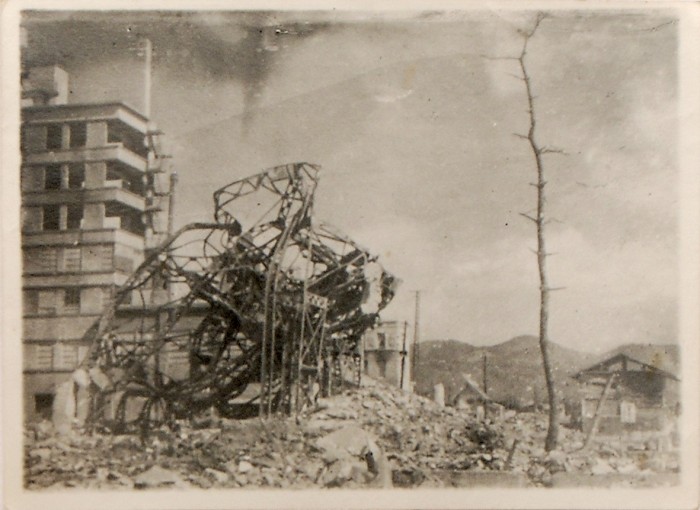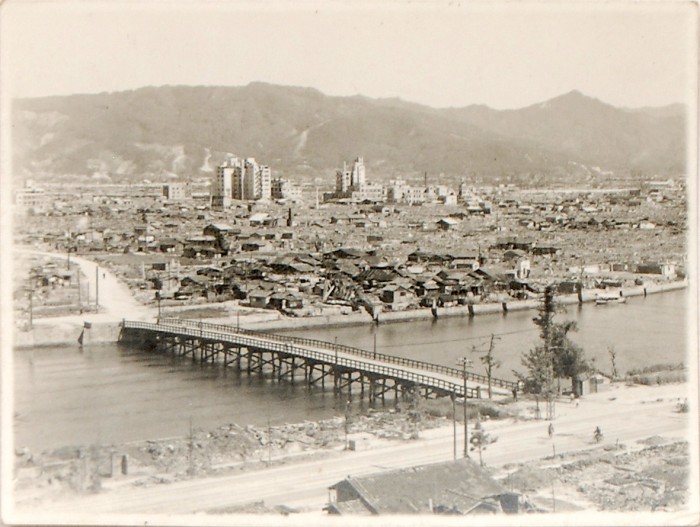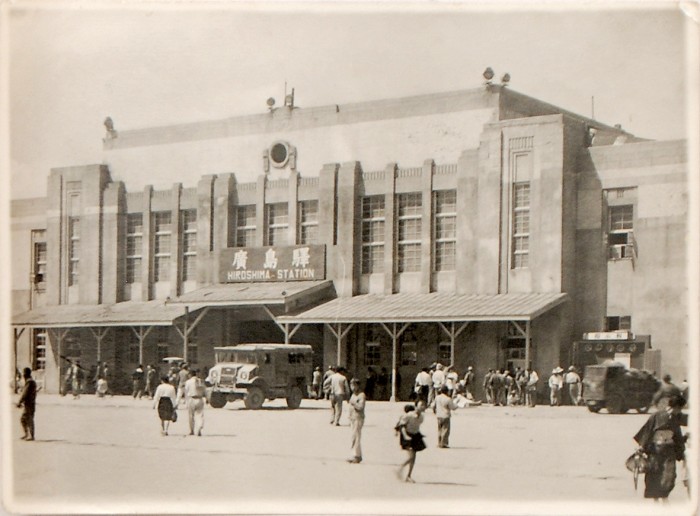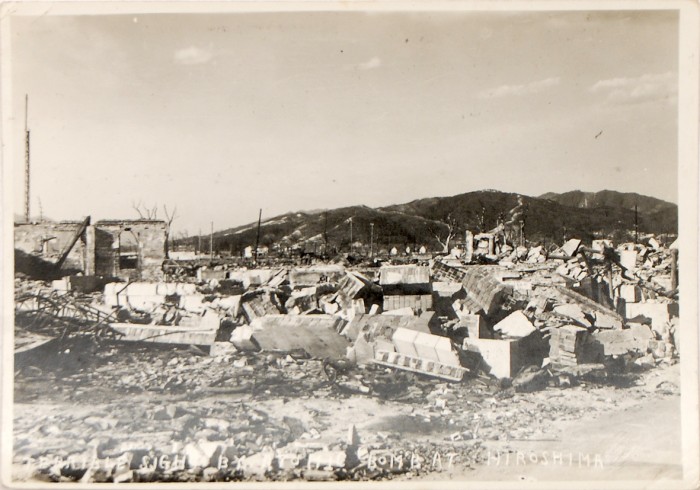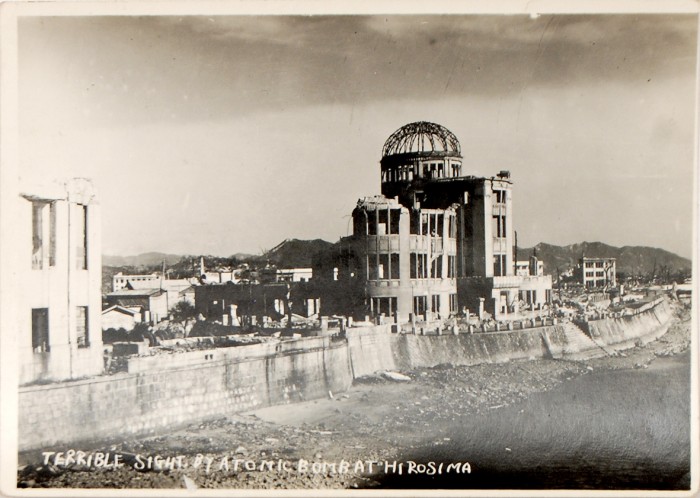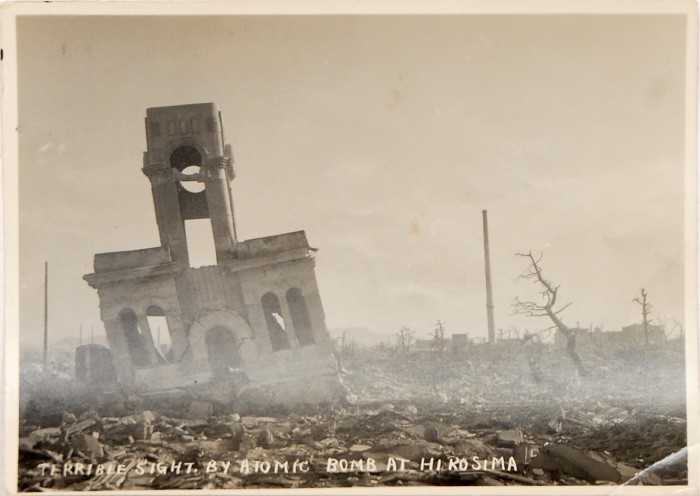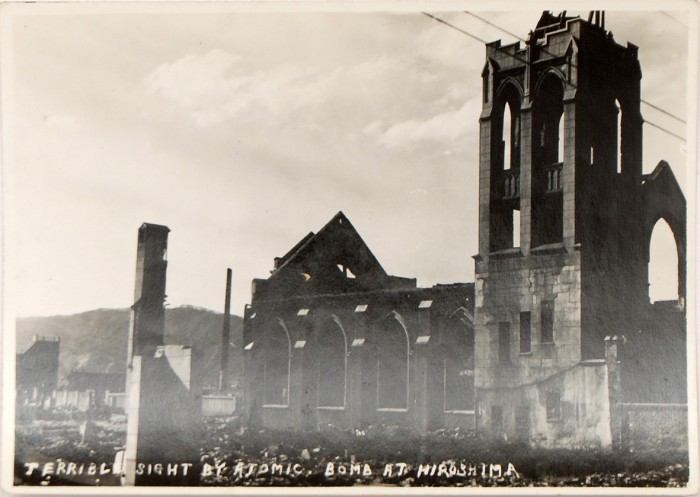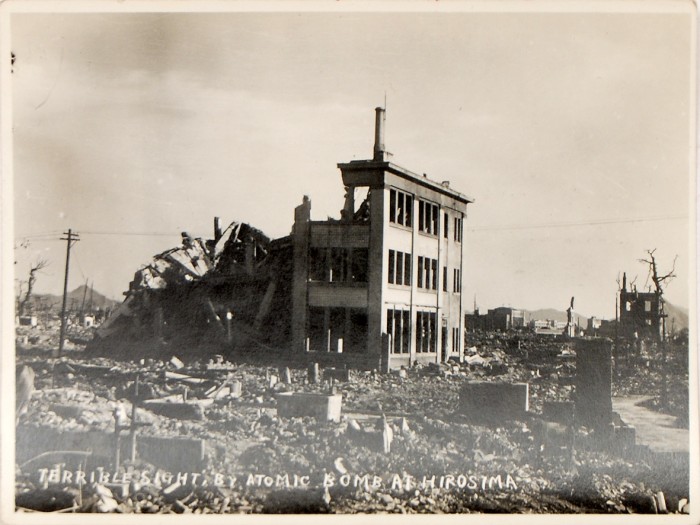Among the joys of cataloguing rare books and historical materials are the serendipitous moments of discovery and connection. We recently obtained a mysterious set of 27 photographs related to the atomic bomb used on Hiroshima, and within a few months of cataloging them I discovered that New York’s International Center of Photography is running a fascinating exhibit that may explain some of the images in our collection.
Hiroshima: Ground Zero 1945 showcases photographs taken by The US Strategic Bombing Survey which, in the months following the war, saw more than a thousand military and civilian experts dispatched to Japan to record and analyze the effects of atomic weapons on urban infrastructure. Their work formed the basis for Cold-War civilian defence planning. The ICP now houses a collection of 700 haunting images taken during this initiative, and the prints have their own incredible history, having nearly been destroyed several times. You can see some of the images on the ICP website linked to above, as well as at The Atlantic and The New York Times Magazine.
Some of our photos may be the work of the USSBS, and we would love to hear from anyone with knowledge of them. They fall into three distinct groups:
4 of the images are not by the USSBS, but are captioned military photographs that have been widely disseminated, including publication in the September 17, 1945 edition of Life Magazine. Some of these images bear green ink stamps that say “TV” and hand-written notes on the backs stating “Please return to visitor office”. We haven’t been able to determine what this means. Was it a military visitor office, perhaps located near Hiroshima, or something else entirely? TV wasn’t widely available in the US until the late 40s and early 50s, so were the stamps added later?
13 of the photos appear to be amateur before and after shots (all around the same size), and none bear the ink stamps or “return to visitor office” notations. Numerous questions arise–who took them and why? Are they all the work of the same photographer returning to the scene after the blast, or are they by several different people? Are any of them related to the USSBS? If they aren’t official photos then how did they come to be in the collection?
Just as mysterious is the third set of photos, each of which has had “Terrible Sight by Atomic Bomb at Hiroshima” handwritten on the negative in white block capitals. These shots are more professionally framed and the prints are higher quality. In style and subject matter they closely resemble the images in the USSBS collection. One of the photos also bears the TV ink stamp and visitor office note. I am not aware, however, that any USSBS photos were captioned in this way, and I discovered online auction records from New Zealand in which photos with the same style of captioning were recently sold in lots of military paraphernalia. Are they USSBS photos, general military images, or shots taken by soldiers to send home as souvenirs?
If you know anything about these photos, or are interested in purchasing the collection, please leave a comment or contact me directly via email: laura AT peterharrington.co.uk.

